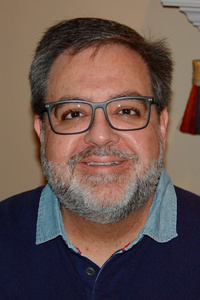“I just want to be a speech-language pathologist or an audiologist. Why do I need to learn about neuroscience and the brain?”

I can’t begin to count the number of times I’ve heard some variation of this statement and question from CSD students during the many years I’ve taught communication neuroscience. But, I’ve realized that from the perspective of the student, it is a very important question to ask, one whose answer actually goes directly to the heart and central purpose of any textbook designed and written to educate students about the nature of the brain. Why do we need to study the fundamentals of neuroscience as a CSD student? I could spend hours trying to provide lofty explanations as to the virtues of neuroscience training in CSD, but I very often prefer to answer this type of question by highlighting one inescapable truth that genuinely surprises most CSD students when they hear it for the first time. The rationale for the importance of neuroscience training in the CSD curriculum boils down to one essential idea that none of us can run away from: whether you are treating a child for a misarticulated /s/ or /r/, a person who stutters, a patient whose had a stroke and can no longer use language, or someone who is hearing impaired, the essence of treatment and all clinical improvement is always about changing some aspect of the patient’s behavior, perception, or cognitive state. The moment you invoke the idea of behavioral, perceptual, and/or cognitive adaptations, one must fully realize that what we are really talking about are changes to the structure and operation of the nervous system itself. To put it simply and plainly, everything we do as clinical speech-language pathologists and audiologists WILL have a direct impact on the very nature, anatomy, and function of the client’s nervous system. I often encourage students to let this idea sink in for a bit and then fully appreciate the magnitude of responsibility that rehab specialists assume when they decide to treat an individual. We are actively changing the brains and nervous systems of our clients through our clinical efforts—period. With this realization in mind, how can students not want to study and understand the nervous system! As I tell students in my university courses, rehab specialists across the spectrum are, in effect, “practicing” clinical neuroscientists whether they realize it or not. And, I believe that it is better to realize this reality than not.
I often discuss with my students that neuroscience is actually one of the few topical areas in the CSD curriculum that literally cuts across and is applicable to virtually all CSD content areas. Neuroscience training is applicable to phonology, voice, stuttering, child and adult language, swallowing, cognitive rehab, motor speech disorders, auditory rehabilitation, hearing aid use, and the list goes on. Neuroscience cuts across these areas because of the fact that we are always talking about behavioral, perceptual, and/or cognitive adaptations when it comes to treatment practice and its impact on client performance and outcome measures. As I teach my course, I frequently emphasize that neuroscience training can help a student appreciate and understand why treatments do or do not work. I also emphasize that neuroscience training can help a student: (1) argue intelligently for the benefits of rehabilitation with other professionals or insurance companies, (2) understand scientific literature on the functioning of the brain during normal and disordered speech-language and hearing behaviors, (3) better understand brain-behavior relationships in order to make appropriate clinical assessments and treatment decisions, and lastly (4) become more creative as a rehab specialist by enhancing their own conception of neurorehabilitation and its potential for a given client (Andreatta, 2019).
As suggested by Barlow (1998), our traditional view of speech pathology will require a dramatic shift to embrace and incorporate different yet related scientific areas (Andreatta, 2008). Specifically speaking, the neurosciences are an area fully capable of contributing much to our profession’s conception of therapy practice. Behavioral therapy programs in general, either intentionally or unintentionally, take advantage of principles of experience-dependent neuroplasticity whereby patterns of behavior are remodeled and trained through graded and targeted activities taught by the intervening therapist. At their essence, clinical interventions function to organize the sensory and motor experiences of the patient by controlling the complexity, frequency, and form of various therapeutic tasks (Barlow, 1998).
From the point of view of someone directly involved in the training of students, it is evident that speech pathology needs to continue making up much ground to more deeply understand, embrace, and incorporate neuroscience principles. From simple articulation errors to the complex deficits associated with neurological or congenital disorders, all available evidence points to the conclusion that treatments provided by a therapist directly impact the individual’s nervous system. Principles of neuroscience and neuroplasticity form the means through which the therapist’s impact on a client’s nervous system will be realized (Andreatta, 2008, 2019).
(Excerpts for this essay were derived from the new textbook by Plural Publishing, entitled Neuroscience Fundamentals for Communication Sciences and Disorders.)
References:
- Andreatta, R. D. (2008). Sensorimotor elements of the orofacial system: Reviewing the basics. Perspectives on Speech Science and Orofacial Disorders, 18, 51–61.
- Andreatta, R. D. (2019). Neuroscience Fundamentals for Communication Sciences and Disorders. San Diego, CA: Plural Publishing.
- Barlow, S. M. (1998). Real time modulation of speech-orofacial motor performance by means of motion sense. Journal of Communication Disorders, 31(6), 511–533.
